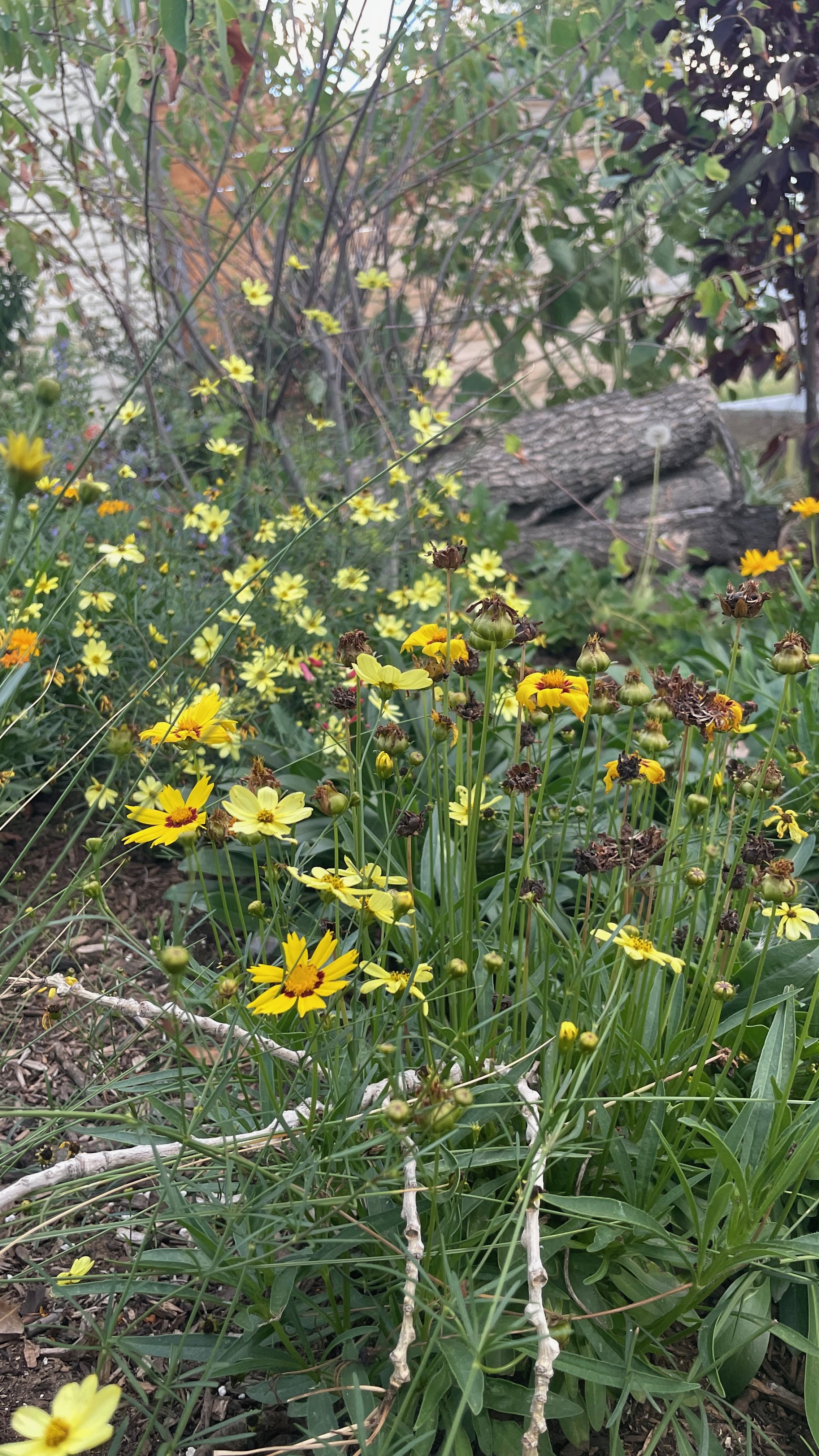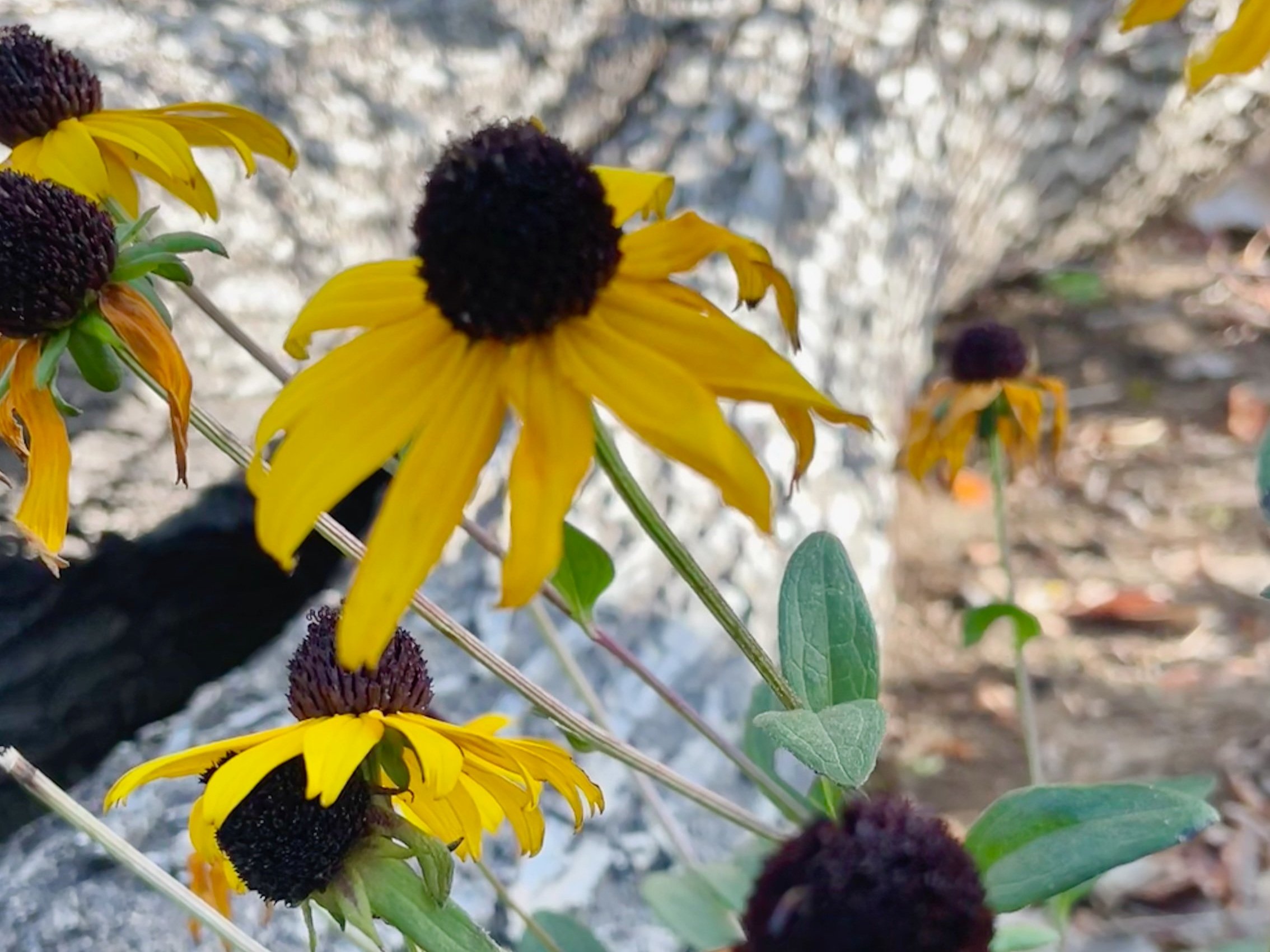Wildlife Garden Plant List
a free downloadable plant list
When putting together my plant list for our Wildlife Garden, I drew from a range of sources and suggestions. Choosing what to plant and how was a somewhat intimidating process. But I started with a few goals and criteria in my plant selection:
North American Natives: I wanted at least 80% of my plants to be North American Native species.
Colorado Natives: of those 80%, I wanted at least 50% of those to be Colorado native species.
Xeric and Low-Water Choices: I did not install irrigation for this project, so these plants needed to be able to get established and to thrive with minimal extra watering beyond year 2. And what watering needs to be done has to be done with a sprinkler.
Bloom Time: I wanted something to be blooming from early spring to early winter.
Seed Heads: to attract birds, I wanted native plants with interesting seed heads — with the added bonus that these plants also may reseed within the planting.
Quantity of Plants: I decided that I needed at least 20 of each plant species to achieve the look and feel that I wanted — drifts of plants and repetition of the same species in a vocabulary that filled in the space
Notice that color and aesthetics are not on this list. When choosing between two similar plants, I certainly took this into account, but I just had to trust that in the end, the mass of plants would be beautiful unto itself. I ended up with lots of yellow and purple flowers, but color was not a primary criteria when making choices.
I took Kelly D. Norris’ class — New Naturalism — on designing a naturalistic planting scheme. It was particularly helpful in organizing plant choices into three layers:
Matrix: low-lying plants that cover the ground, provide habitat for small mammals and ground-dwelling insects; these plants cool the soil, spread in a creeping manner, and are often the first to emerge in the spring.
Vignette: taller plants, generally herbaceous perennials that offer nectar and food to birds and flying insects; these plants are often later bloomers and bring the drama to a planting scheme.
Structural: woody perennials, taller grasses, and trees which provide winter interest as the herbaceous perennials die back in the late fall; when mature, these plants provide nesting places for birds as well as shade and habitat for other animals.
In the end, I chose more than 50 different species of plants with a minimum of 20 plants of each species. Some of the choices in the end depended on High Country Gardens’ inventory at the time, too. And we supplemented those selections with plants from a local nursery — particularly plants in the Structural layer.
When I was planning this project, I asked garden designer, Benjamin Vogt, how many plugs he uses per square foot. He said he plants at 10-12” on center, but that’s because that is what is most economical. If he could, he would do 6-8” on center. And I can see why. I also planted at 10-12” on center (1 plant per square foot), and with small plants there is a LOT of blank space while you wait for those plants to grow in. That blank space will fill with weeds because nature abhors a vacuum. But it also makes the entire planting look — naked and a little messy. I know, however, that as things grow and mature, those holes will fill in, and things will look more intentional.
As you are planning, though, think about plant density. Put in as many plants as you possibly can — and add in seeds, too — to reduce that weed pressure bit by bit.
But I don’t want all of this work to exist in a vacuum. I’ve done it, and I want other gardeners to have this tool to use, too! So let’s take a peek at some of the plants on my plant list:
Sterntaler and Moonbeam Coreopsis (Coreopsis lanceolata 'Sterntaler' and Coreopsis verticillata 'Moonbeam') bloomed within 6 weeks of being planted.
Tulipa humilis Little Beauty and Tulipa bakeri 'Lilac Wonder'both emerged in mid-April. Lilac Wonder bloomed first followed by Little Beauty.
Flowerkisser® Dark Shadows Salvia (Salvia x 'WWG01') lit up in the sunset every evening.
Splendens Armeria | Armeria maritima 'Splendens' blooming in April
Coreopsis verticillata 'Moonbeam' and Redbirds In A Tree (Scrophularia) | Scrophularia macrantha blooming together.
I’ve made the entire plant list available to you. All you have to do is fill out the form below, and you’ll recieve an email with a link to a view only version of the Google Sheets document. You may make a copy of the document for your own records — and to edit and use for yourself.
And if you have questions about how to use the Wildlife Garden Planting List, check out this video for more information:
Tips for how to use the Planting List spreadsheet

















